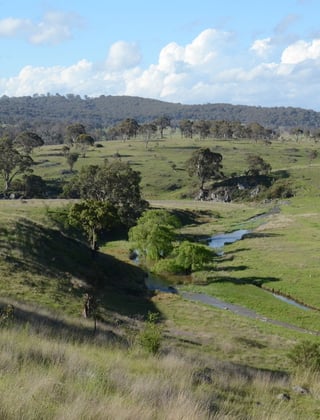Mitigation of greenhouse gas emissions

The high profile of the recent United Nations Climate Change Conference, also known as COP26, has once again highlighted the importance that all industries play their part in combatting climate change. The Australian wool industry continues to work collaboratively with other livestock industries to accurately assess and identify mitigation pathways for greenhouse gas emissions.
The high profile of the recent United Nations Climate Change Conference, also known as COP26, has once again highlighted the importance that all industries play their part in combatting climate change. The Australian wool industry continues to work collaboratively with other livestock industries to accurately assess and identify mitigation pathways for greenhouse gas emissions.

Wool is a natural, renewable and biodegradable fibre that is well placed to take advantage of the growing shift towards planet-friendly products. However, to optimise the eco-credentials of Australian wool and ensure that it is regarded as a sustainable fibre by all, AWI is devoting resources to remedy any environmental weak spots in the wool supply chain.
The on-farm production of greenhouse gases (GHGs), primarily methane belched by sheep, is an important area in which the Australian sheep and wool industry can reduce its environmental impact. The industry recognises this and is acting upon it. A focus of both the Australian wool industry’s 10-year plan, Wool 2030 (launched in December 2020), and the Australian sheep and wool industry’s Sheep Sustainability Framework (launched in April 2021), is for the industry to reduce and mitigate its GHG emissions and for Australian wool production to strive for carbon neutrality.
GHG emissions from livestock are also something that critics of livestock agriculture often highlight, threatening the industry’s social licence. This is despite the fact that the burning of coal, oil and gas (and not agriculture) is the dominant source of GHGs. Furthermore, the prevalent GHG from livestock is ‘biogenic methane’, which is part of the natural carbon cycle – it breaks down into CO₂ after about 12 years and is then taken up by plant photosynthesis. In contrast, fossil methane and CO2 from the burning of coal, oil and gas is an extra burden on the atmosphere as it is derived from carbon securely held underground for millions of years (see diagram above).
AWI is collaborating with other rural Research & Development Corporations (RDCs) on several GHG-related projects. While this focus on carbon neutrality and reducing GHG emissions is primarily aimed at reducing the environmental footprint of the Australian wool industry, it also seeks to open up avenues for woolgrowers, who are taking steps to reduce their farm's carbon footprint, to receive a premium by selling their ‘carbon neutral’ wool to brands or earning income from carbon mitigation as an ‘ecosystem service’.
Mitigation strategies for lower emission wool
Significant research is under way to assess and identify the technical feasibility, the cost-benefits, and the risks and barriers to achieving lower emission wool.
The research aims to identify plausible GHG mitigation strategies for the wool industry, capitalising on previous industry research, and assess potential adoption rates, including an economic assessment of the cost to woolgrowers of implementing the mitigations options.
Potential GHG mitigation strategies could include options to:
- reduce emissions, such as through the use of feed additives or low methane pasture species, and increasing flock productivity (producing more lambs and wool from each sheep); and
- offset emissions by increasing on-farm carbon sequestration and storage, such as through improved management of soil organic matter and tree planting.
Pathways for woolgrowers to reduce emissions are currently being investigated by AWI with up to six different industry pathways being detailed. Planning is also under way by AWI for a research program assessing the safety and efficacy of methane-mitigating feed supplements in grazing scenarios.
Research into GHG measurements
AWI is also collaborating on a project that is investigating whether the impact of methane emissions from livestock on global warming is being assessed accurately.
The current global standard metric for reporting GHG emissions and impacts (known as GWP100) uses a unit of measurement of ‘carbon dioxide equivalents’ over a timeframe 100 years. However, while carbon dioxide is a ‘long-lived climate pollutant’ and stays in the atmosphere indefinitely, methane is a ‘short-lived climate pollutant’ that has a far shorter atmospheric lifetime of about 12 years.
Therefore, GWP100 arguably does not accurately reflect the decomposition of methane and has limitations as a metric. This is particularly important for ruminant-based agricultural industries as their emissions of GHGs contain a considerably higher proportion of methane compared to other GHGs, such as carbon dioxide and nitrous oxide.
New methods of accounting for methane, such as the GWP* method, are being investigated. GWP* uses ‘carbon dioxide warming equivalents’ as a unit of measurement and specifically aims to rectify the problems identified in the GWP100 method.
AWI has funded a study to calculate the GHG emissions at the individual wool-growing property scale as well as the national scale over the past 40 years; the study provides a comparative assessment of the flock’s emissions calculated using the experimental GWP* method and the current GWP100 method. In addition, the study models and assesses two hypothetical scenarios for the flock: a 25% decrease and a 25% increase in national flock numbers.
Analysis of the national flock emissions will identify the long-term, industry wide implications if the GWP* metric were applied. Researchers are currently drafting a peer reviewed paper, co-authored by leading GHG researchers from Oxford University.
This article appeared in the December 2021 edition of AWI’s Beyond the Bale magazine. Reproduction of the article is encouraged.















